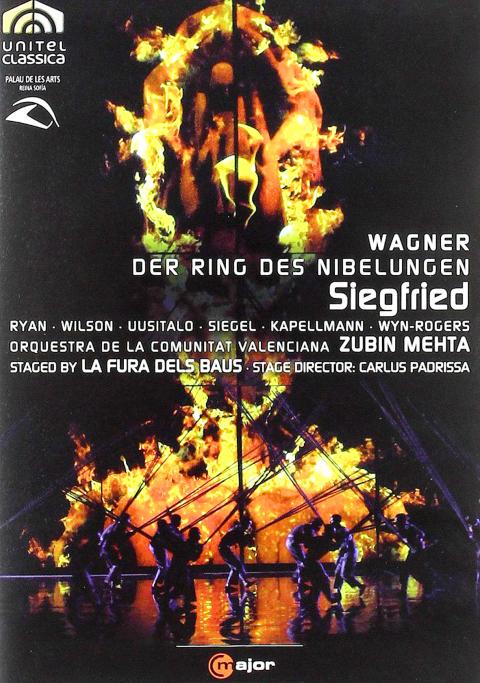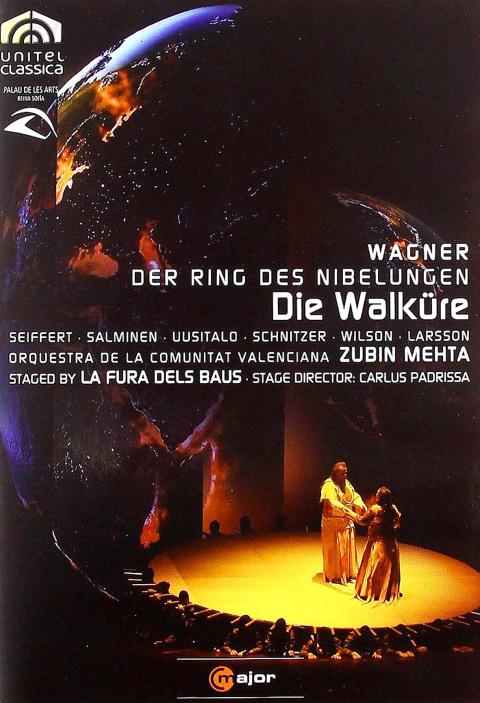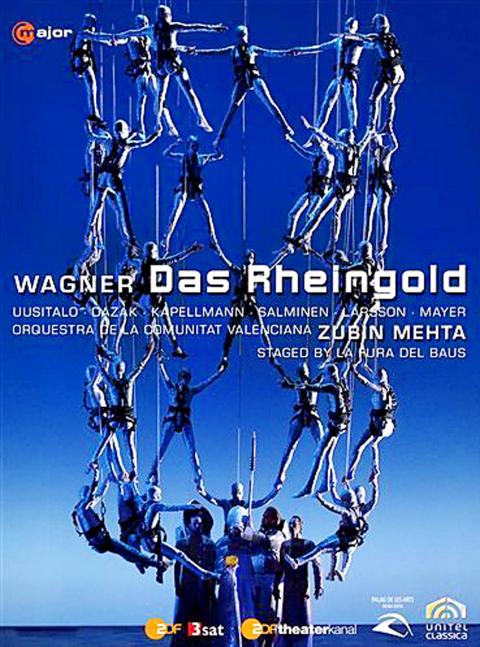Finally it’s happened. After a decade of productions of Wagner’s four Ring operas that in one way or another sought to undermine the original, we have at last got a marvelous, indeed superlative, Ring that is wholeheartedly, but also very inventively, conceived in the spirit of these incomparable late-Romantic works. No more “updating” with the hero Siegfried appearing as a lout in a frilly apron in a modern kitchenette (the Stuttgart Ring); no more Siegmund, another hero, having a pot of flour and water emptied over his head (the Barcelona Ring); and no more Norns, guardians of the world’s fate, shown as women in headscarves nattering in the audience (the Copenhagen Ring).
The Copenhagen Ring, though, was actually something of an amalgam — many ridiculous and pointless changes to the story, but a passionate loyalty to the original at its greatest moments. It was as if the tide was already turning, but there was still a lot of the old dross floating about on the water.
But now we have a stunningly imaginative rendition that will satisfy all but the most embittered of souls.

It comes from Valencia, Spain, where a new opera house has recently been opened. Many of the soloists are relative unknowns, at least on the international circuit, but a closer examination quickly reveals that this is a top-notch production, graced by youthful vitality, but also starring Matti Salminen and Stephen Milling, two of the most impressive (and intimidating) bass-baritones in the business. Above all, the conductor is Zubin Mehta, and one way of praising this event is to say that even he probably counts this Ring as among the peaks of his illustrious career.
These DVDs take as their basis two facts — that the music is sumptuous, and that the story is mythical. Consequently every effort is made to transport the eye to the realms of the fantastic and the marvelous, in the same way the music transports the listener to previously unimagined realms. Of course, things could be more fabulous still if this were the result of animation. But when you consider that what you’re watching is a stage production, the degree of enchantment achieved is extraordinary indeed.
The dreamlike, daunting and mesmerizing stage effects are basically created by three things — moving images projected onto a vast screen, or sets of screens, at the back of the stage; what look like electric forklift trucks in which the gods routinely move about; and a group of some 30 identically costumed “extras” who at times resemble maggots and at other times the carcasses of dead animals. In what is possibly the most original stroke in a highly original production, these extras become, in Das Rheingold, the Rhine-gold itself, crawling over the stage like an ominous jelly with a mind of its own, or hung by the heels in a rotating production-line in Alberich’s subterranean workshop.

As for the projections, they feature star-filled skies, planets rising and setting, snowy mountains, fire, embryos and human heads. Sometimes screens partially move away from each other revealing other scenes at a distance behind them. But it’s to this production’s credit that at times nothing visually distracting takes place, and the soloists are left to their own devices, as for example during most of Siegfried and Brunnhilde’s love duet in Act Three of Siegfried, and during Wotan’s dialogue with Erda earlier in the same act.
Rheingold opens with the Rhine maidens in water-filled Perspex tanks suspended on cables (destined to have their plugs pulled out and the water cascade into carefully-placed holes in the stage). The gods then appear resembling spacemen preparing for blastoff, but with Wotan making me realize for the first time just how carefully Wagner considered what kind of music would be appropriate for the king of the gods to sing.
Die Walkure has a gigantic tree as the only scenery in Act One, but with birds flitting among its branches, rising and descending sap, eyes concealed among the foliage, and falling leaves. The three characters resemble cavemen crawling around among stone circles, with tattoos and dreadlocks much in evidence. In Act Three there are several ideas in operation for the famous Ride of the Valkyries — one is a swinging wrecker’s ball to which cling 20 or so of the maggot-like extras, while another is the god-machines in serried ranks tipping their silver platforms in time to the music. And then, for the encircling of Brunnhilde on her mountain-top with a ring of fire, you have the extras lying on their backs under a spiked wheel passing fire one to another until the whole scene resembles a gigantic birthday cake.

Act One of Siegfried is an orgy of machinery — Mime wired up by Wotan in what looks like a hideous vivisection experiment, Siegfried on some sort of exercise machine but with his various organs displayed pumping away on giant screens, and finally the extras stamping and swaying like machine parts as the sword is forged, and then rolling on the floor in an ecstasy that turns to horror as the dread weapon is completed. I will leave you to find out for yourself what Gotterdammerung, musically the most rewarding of the four operas, has in store in this innovative rendition.
Mehta does wonders with the Valencian Community Orchestra, producing a notably theatrical reading that’s rhythmically incisive and always supportive of the singers, who display no weak links. Juha Uusitalo’s Wotan is very powerful, as is Jennifer Wilson’s Brunnhilde. Lance Ryan is a wonderfully engaging Siegfried, while Franz-Josef Kappellmann tellingly repeats the role of Alberich that he sang in Taipei in 2006.
Do I have any criticisms? Yes. The pulling out of the sword in Walkure seemed somewhat underwhelming, and the dragon in Siegfried wasn’t as spectacular as it could so easily have been. But these are small cavils in what is undoubtedly a magnificent and groundbreaking production, musically strong and with imagination in spades.

Is it, then, the best Ring currently on the market? I still retain a great affection for the famous Boulez/Chereau version, so I will say that I consider this Valencia version to be now one of the two best stagings on DVD. It is also available in Blu-ray, and as a boxed set. Subtitles are in English, German, French and Spanish, and all four operas have “The making of ...” bonus supplements. Finally, there’s a bargain Highlights disc for this set available from Presto Classical for NT$390.

As we live longer, our risk of cognitive impairment is increasing. How can we delay the onset of symptoms? Do we have to give up every indulgence or can small changes make a difference? We asked neurologists for tips on how to keep our brains healthy for life. TAKE CARE OF YOUR HEALTH “All of the sensible things that apply to bodily health apply to brain health,” says Suzanne O’Sullivan, a consultant in neurology at the National Hospital for Neurology and Neurosurgery in London, and the author of The Age of Diagnosis. “When you’re 20, you can get away with absolute

When the South Vietnamese capital of Saigon fell to the North Vietnamese forces 50 years ago this week, it prompted a mass exodus of some 2 million people — hundreds of thousands fleeing perilously on small boats across open water to escape the communist regime. Many ultimately settled in Southern California’s Orange County in an area now known as “Little Saigon,” not far from Marine Corps Base Camp Pendleton, where the first refugees were airlifted upon reaching the US. The diaspora now also has significant populations in Virginia, Texas and Washington state, as well as in countries including France and Australia.

On April 17, Chinese Nationalist Party (KMT) Chairman Eric Chu (朱立倫) launched a bold campaign to revive and revitalize the KMT base by calling for an impromptu rally at the Taipei prosecutor’s offices to protest recent arrests of KMT recall campaigners over allegations of forgery and fraud involving signatures of dead voters. The protest had no time to apply for permits and was illegal, but that played into the sense of opposition grievance at alleged weaponization of the judiciary by the Democratic Progressive Party (DPP) to “annihilate” the opposition parties. Blamed for faltering recall campaigns and faced with a KMT chair

A police station in the historic sailors’ quarter of the Belgian port of Antwerp is surrounded by sex workers’ neon-lit red-light windows. The station in the Villa Tinto complex is a symbol of the push to make sex work safer in Belgium, which boasts some of Europe’s most liberal laws — although there are still widespread abuses and exploitation. Since December, Belgium’s sex workers can access legal protections and labor rights, such as paid leave, like any other profession. They welcome the changes. “I’m not a victim, I chose to work here and I like what I’m doing,” said Kiana, 32, as she